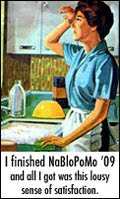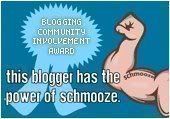Running with the Bulls, New Orleans style
In the summer, Unitarian Universalist churches do not hold formal services, if any, because - as the joke goes - God goes to Cape Cod (or the beach, or the lake, just insert your vacation spot of choice). My congregation has lay led services throughout the summer and I volunteered to give my own reflections on New Orleans. Here is what I said this morning:
There is a song, Do You Know What it Means to Miss New Orleans, famously sung by New Orleans native Louis Armstrong that includes the lines:
Miss them moss covered vines… the tall sugar pinesMy family has many layered connections to New Orleans, Louisiana and the deep south. My mother spent her first ten years of life in Baton Rouge, LA as her father worked for the Army Corps of Engineers. My maternal grandmother’s family was for many generations from Natchez, MS - in fact the first Allison in the family was a 6 foot, 3 inch red headed man named Allison Foster from New Hampshire who moved to Natchez following the Civil War. There are family tales of those Natchez ancestors going to the “big city” - New Orleans - for shopping, theater and general merriment.
Where mockin’ birds used to sing
And I’d like to see that lazy Mississippi…. Hurryin’ into spring
Do you know what it means to miss New Orleans?
One such story comes from this century and involves people still alive. My 96-year-old grandfather still tells of going to Mardi Gras in New Orleans in 1949, the year Louis Armstrong rode as the King of Zulu. Mardi Gras is actually only one day in, what the locals call, the Carnival Season. My grandfather, grandmother and aunt (my mother was too young to attend and stayed behind in Baton Rouge) went to the office of a family friend’s who was a dentist. His office was on the second floor of a building which was along the parade route. My grandfather recalls watching Satchmo Armstrong riding down the wide street, waving and, in his words “having a grand time”.
After graduating from college, I ended up living in New Orleans when I was placed by Teach for America in a 1st through 3rd grade emotionally disturbed/behavior disorder class. I lived in a neighborhood called Uptown in a grand if slightly decaying old home with three other teachers. During the time I lived in New Orleans I was introduced to a young man in his early 20’s. He was half Cajun, half Italian and cooked food I never experienced. He managed to find on-street parking next to the French Quarter during my first Mardi Gras, taught me how to properly eat crawfish and had a deep love of his home city. I married him three years later and we are celebrating our 15th wedding anniversary in September.
My husband moved to Boston when he finished his MSW and this is where we’ve lived for our 15 years together. Of course, you can take a New Orleanian out of New Orleans but you really can’t take the city out of the person so we would return to the city once a year if not more often - for weddings, baby christenings, holidays, family vacations and the never ending festivals. One vacation with his family involved flying into New Orleans, renting a red convertible and driving to Pensacola, Florida to spend the week at the beach. There are photos of me, 6 months pregnant with twins, floating in the Gulf Coast waters that are affectionately called by locals as the “Redneck Rivera”.
Perhaps the best known of the festivals are Mardi Gras and the wonderful food, music, and art celebration known simply as Jazz Festival. When our twin sons were born we would make an effort to go to one or the other of these big events each year. There is a photo of my husband and I at a Jazz Fest in which we each have a big baby carrier on our backs and little 8-month-old heads stick out from the tops.
There is another photo of our boys as two year olds at Mardi Gras sitting atop step ladders in little boxes that resemble old fashioned tool carriers. These are the best places to sit in order to be seen by the riders of Mardi Gras floats.
A moment to try and explain Mardi Gras. Mark Twain wrote in a letter in 1859 “I think that I may say that an American has not seen the United States until he has seen Mardi-Gras in New Orleans.” The season begins on January 6th, all Kings’ Day. This is the time that teen-age girls are presented to society and that tradition continues as the local newspaper publishes photos of girls in white beaded gowns and tiaras prior to the large balls. Small parades are held on the weekends through January and February. The season culminates the day before Ash Wednesday. Fat Tuesday, just happens to be biggest day of the season which makes it the best known. There are more parades that day. Large floats wind their way down the grand boulevards of the city and surrounding suburbs with riders throwing plastic beads, large coins called doubloons, plastic cups, plush animals and trinkets.
It is difficult to convey just how much the city and surrounding area literally shuts down and rules go out the window. Like Hemingway writes in The Sun Also Rises about the impact of another festival on Pamplona, Spain, “it seems as though nothing could have any consequences”. Grown women dress in pig costumes or as Maid Marion, men wear superhero costumes, people wear masks so they can hide. One man I know has a note from the actress Brook Shields thanking him for creating the mask she wore in the French Quarter during one Mardi Gras. She wrote that no one recognized her as she wandered the streets for hours surrounded by people and she loved the anonymity.
Before our daughter was born in 2004, we had taken our boys to one Jazz Festival, two Mardi Gras and several Thanksgivings in New Orleans. For one reason or another - for instance no one we know getting married, suddenly traveling with five seemed much more cost prohibitive - we didn’t get back to visit once she was in our family.
But in August of 2005, my family’s relationship with New Orleans changed. On Monday, August 29th, a hurricane named Katrina plowed into the city. It wasn’t until Tuesday morning the 30th was the gravity of the storm and its after effects were starting to be understood. While our immediate family had all evacuated and were accounted for, several close friends were determined to ride it out. The news we were hearing was frightening and fragmented. During breakfast my husband walked over to our then 16 month old daughter, rubbed her head and said sadly “I never got you to my hometown, Baby Girl”. He used a term of endearment with her that I had never heard him say and in a tone that mixed both his native accent with mourning. She kept happily eating her Cheerios in her high chair, clueless of what was said to her or what was happening to her daddy’s beloved city.
I think, in many ways that was the sadness and fear many who lived in New Orleans faced that August, 2005. That their hometown - either actual or adopted - was gone. That there was no way it could come back.
However, by February of this year - as a certain team was winning the National Football League’s championship game - New Orleans showed that if there is one thing it is, it is a town that survives. Through determination, grit, humor, food and music, New Orleans manages to rise again and again through storms, financial woes, and other awful events. I visited New Orleans for a conference in April 2007 and was struck by how some neighborhoods didn’t look like they had been underwater 18 months earlier.
However, the oil volcano - a rap video called Sorry Ain’t Enough No More by local New Orleans artists appropriately question the use of the term “leak” - in April of this year has done something that I have rarely heard or seen in the Crescent City, put a note of sad resignation in the voices of people I know down there.
Several weeks ago I posted on Facebook the New Yorker cover by Bob Staake. It was a near perfect replica of an Escher painting with lone turtle at the bottom of the diamond and two fish above it and different species above them. Then past the line where water meets the sky three birds fly below two other types of birds and a lone pelican flies at the top of the diamond. However, in this New Yorker cover entitled “After Escher: Gulf Sky and Water”, the water is actually an icky black and the birds fly with globs of oil dropping off of them.
A friend who lives in the French Quarter called me to express how grateful he was to see that cover art because it showed that people were still paying attention to the crisis in the Gulf. Earlier this month I asked the owner of a funky little t-shirt shop which also prints bags, bumper stickers and other items to showcase wry political sentiments why he hadn’t made any bumper stickers about the oil in the Gulf. “We all thought it would be plugged by now” he resignedly responded.
While our national addiction to the oil fouling our coastline continues to be talked about, what doesn’t get as much attention, at least in the northeast, is the economic boom the oil industry provides Louisiana. The Times-Picayune, New Orleans newspaper, published a lengthy article a week ago (July 18, 2010) about the region’s historic relationship with offshore oil industry. According to reporter David Hammer, the oil industry at one point paid taxes that once financed 40 percent of the state budget and now pays one out of every eight dollars it spends. For a state mired in poverty this is a difficult revenue source to lose.
For all the complexities that poverty brings, the city and region are equipped to deal with hurricanes. An inn manager from the Alabama coast told the New York Times last month “Hurricane, it comes, it does its thing, then it’s over with and we can fix the damage.” New Orleans has one of the most complex systems of canals and pumps that continuously keeps the city dry. The rain storms we are experiencing this year causing massive flooding in Somerville’s Union Square and elsewhere would merely cause puddles in New Orleans.
Yet that Alabama inn keeper captured the sentiment perfectly when he went on to tell the Times, “ain’t nothing I can do to get the oil off the ocean.” You can’t put plywood up on the marsh like house or store windows or move all the birds and fish to a safer place like we can our children and families.
I went back to New Orleans earlier this month to visit that friend who appreciated the New Yorker cover. Originally from upstate New York, he has lived in and around the French Quarter for nearly all of his 20 years in New Orleans. He has fully embraced living in New Orleans - the humor, the food, the bugs. When I walked into his beautiful condo which he shares with his partner there was one of those huge Creole butterflies - commonly known as a cockroach - as big as my thumb crossing his kitchen floor. “Oh” he barely uttered, as if seeing a dust bunny.
[I want to stress that every home, business, church, office, and hospital has cockroaches in them. It is in no way a sign of cleaniless, or lack thereof.]
This just shows how much of a New Orleanian my friend has become. A roach the size of a human appendage doesn’t faze him.
While visiting with my friend was the main purpose of my trip I also had a personal goal - to run with the bulls. July 11th this year was the 4th annual San Fermin in Nueva Orleans, which is modeled on the famous running with the bulls in Pamplona, Spain. Early that Saturday morning I wore my all white outfit, a red handkerchief and red sash (made by my French Quarter friend) and a red straw cowboy hat. There was a man in a large pontif style hat announcing run information from a bar balcony and a group of men carried in a large paper mache saint, or saint-like being since it was wearing a propeller beanie on its head. The 2000 plus runner were told to kneel before this golden being and then they started yelling at us to run through the streets of the French Quarter.
After several blocks of running folks started to slow down to a trot, walk, or stroll, which seemed more appropriate for those carrying a beer in a plastic cup at 8 o’clock in the morning. Then as we turned onto Bienville Street someone started yelling “the BULLS!!” and suddenly members of various all-female roller derby clubs started streaking through the crowd. Dressed red and black they had bull horns attached to their helmets. They wielded plastic bats of various sizes and went after the delicate backsides of the runners. Some runners had attached appropriately named bull’s eyes to the back of their shirts. The roller skating bulls did not disappoint them.
The run ends at, where else for New Orleans, a bar and runners mingle with bulls. One bull caught my eye. She had the BP’s now infamous green sunflower looking logo on a cloth skewered on one of her horns. Folks cheered as they walked by her and many, including myself, asked to take a picture of her.
And so I have a photo of a young woman with a black helmet sporting huge horns and fake roses surrounding them. BP’s logo is dangling from one of the horns and she has a look that defies you to think she is crazy.
Because, for all of the talk that New Orleans is built is a “bad location”, that it is mismanaged, that it is too poor, it is America’s city. Twain recognized its importance before the United States was even 100 years old.
New Orleans is the crazy aunt of America. The crazy aunt that always says those things you don’t say in polite company, comes a bit tipsy to the family gathering and keeps on drinking (and we’re jealous because that is how we would like to deal with the family gathering) and has a garish way of dressing. But we would be such a boring American family if New Orleans wasn’t our aunt.
As Hemingway wrote in The Sun Also Rises during another bull run, "Oh, darling, please stay by me. Please stay by me and see me through this." New Orleans, I will stay by you. I hope you all will too.
May it be so.


















